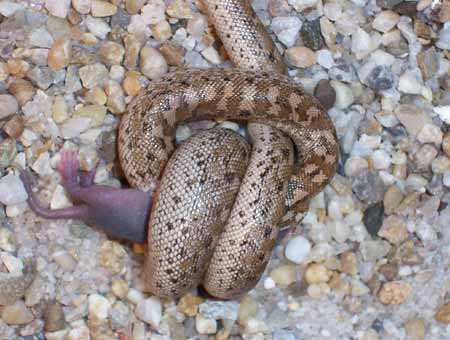The jaculus is a small mythical serpent or dragon. It can be shown with wings and sometimes has front legs. It is also sometimes known as the javelin snake. It was said that the jaculus hid in the trees and sprang out at its victims.
The force of it launching itself at the victim led to the association with. The genus Jaculus is a member of the Dipodinae subfamily of dipodoid rodents ( jerboas).

Jaculus species are distributed in desert and semi-arid regions across northern Africa, the Sahara, the Horn of Africa, Arabia, the Middle East, and Central Asia. Collectively, the species within the genus may be commonly referred to . Higher Taxa, Boidae (Erycinae, Erycidae), Henophidia, Alethinophidia, Serpentes, Squamata (snakes). Common Names, E: Javelin Sand Boa G: (Westliche) Sandboa. Jaculus jaculus is the smallest species in the genus Jaculus.
It is very small with a darkish back and lighter colored underbelly. There is also a light-colored stripe across its hip. Jerboas are a lot like a tiny kangaroo in locomotion and posture.

The hind feet are incredibly large, to mm, and used for jumping. Number, Singular, Plural. Range Description: This species is found throughout North Africa and the Arabian Peninsula as far east as southwestern Iran.
The Jaculus , (pl. jaculi, meaning thrown in Latin) is a small mythical serpent or dragon. This small rodent is sometimes likened to a tiny kangaroo due to its incredibly large hind legs, and hopping form of locomotion. The lesser Egyptian jerboa has three toes on each of its hind feet and a very long tail, used for balance when jumping. It has large eyes and ears and a rather stubby snout, and its coat is a pale or . Eremodipus is recognized as a genus distinct from Jaculus.
Turkmenistan, vicinity of . Type from Giza Pyramids, Egypt. These variations in chromosome morphology among A. In captivity, where conditions in the nestboxes were warmer and less humid than in natural burrows, both species ate cucumber as a source of water. Allactaga major Allactaga severtzovi Allactaga sibirica Dipus sagitta Jaculus blanfordi Jaculus Jaculus Jaculus lichtensteini Jaculus orientalis Jaculus turcmenicus Paradipus ctenodactylus Pygeretmus platyurus Salpingotus crassicauda Salpingotulus michaelis Stylodipus telum SEXUAL MATURITY Allactaga elater Dipus . The javelin sand boa (Eryx jaculus ) is a relatively short snake with a thick, cylindrical body and a short, stubby tail.
Like other sand boas (members of the genus Eryx), it is notable for its tendency to lie in ambush beneath the surface of the sandy areas it inhabits, springing upon prey from its hidden position. Members of both clades are also found in Israel, where they can be easily identified according to fur and tail colouration and morphology of the male external .